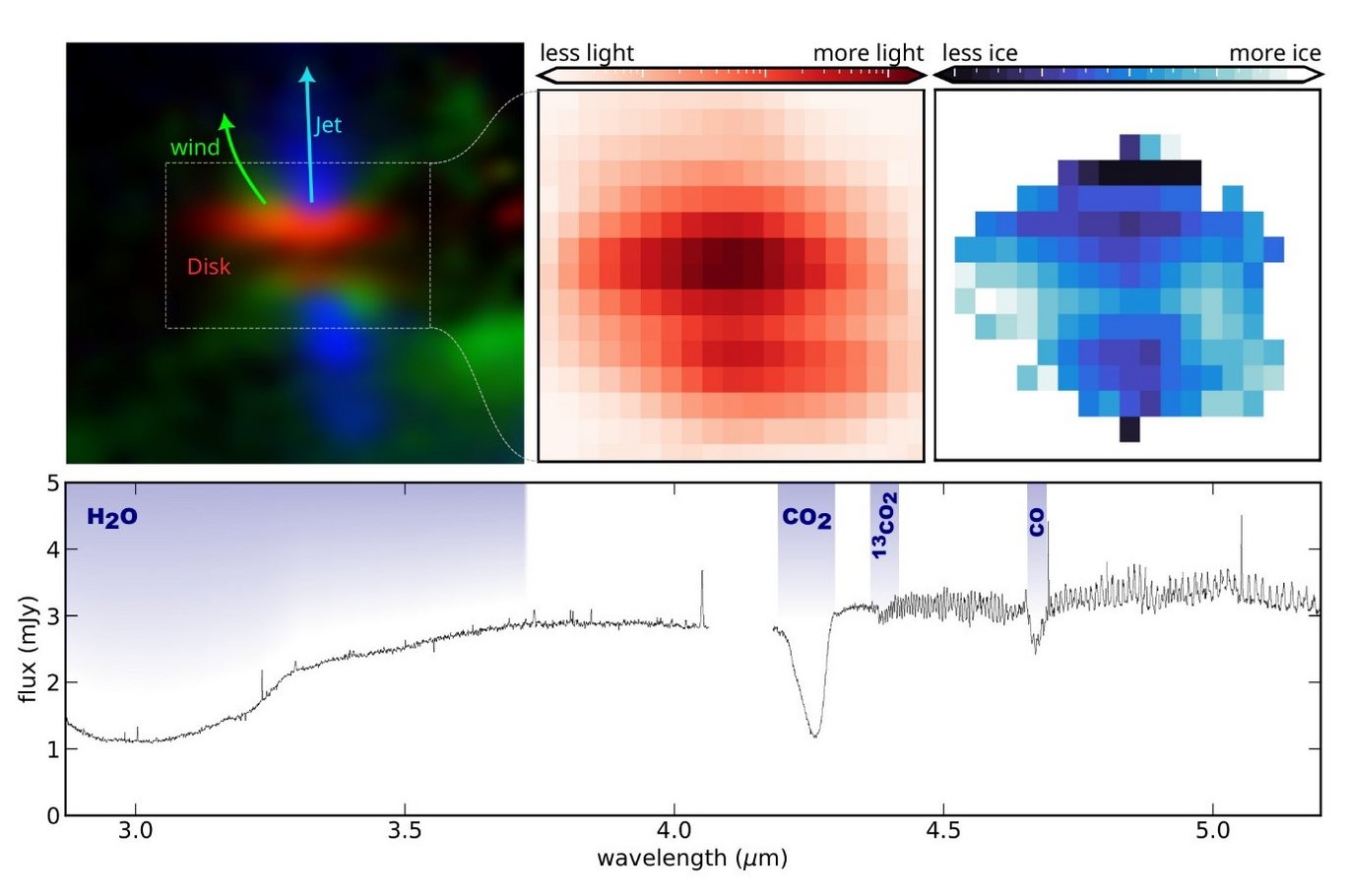New center article
Title: A JWST inventory of protoplanetary disk ices: The edge-on protoplanetary disk HH 48 NE, seen with the Ice Age ERS program

Figure caption: The study by Sturm et al. (2023) at a glance. Top left: the region observed. Top right: details about the observed light and the water ice feature. Below: a spectrum showing peaks and troughs that result from different molecules.
Summary:
Ices are the main carriers of volatiles in protoplanetary disks and are crucial to our understanding of the protoplanetary disk chemistry that ultimately sets the organic composition of planets. As part of the Director’s Discretionary-Early Release Science (DD-ERS) program Ice Age on the James Webb Space Telescope (JWST), this work presents the first JWST/NIRSpec observations of the edge-on Class II protoplanetary disk HH 48 NE revealing spatially resolved absorption features of the major ice components H2O, CO2, and CO, and multiple weaker signatures from less abundant ices NH3, OCN−, and OCS. Isotopologue 13CO2 ice is detected for the first time in a protoplanetary disk. CO ice is observed at perplexing heights in the disk, extending to the top of the CO-emitting gas layer. Although poorly understood radiative transfer effects could contribute to this, we argue that the most likely interpretation is that we observed some CO ice at high temperatures, trapped in less volatile ices such as H2O and CO2. Future radiative transfer models will be required to constrain the physical origin of the ice absorption and the implications of these observations for our current understanding of disk physics and chemistry.
Press release link: https://www.universiteitleiden.nl/en/news/2023/12/first-detailed-picture-of-ice-in-planet-forming-disk
Article link: https://www.aanda.org/articles/aa/full_html/2023/11/aa47512-23/aa47512-23.html
